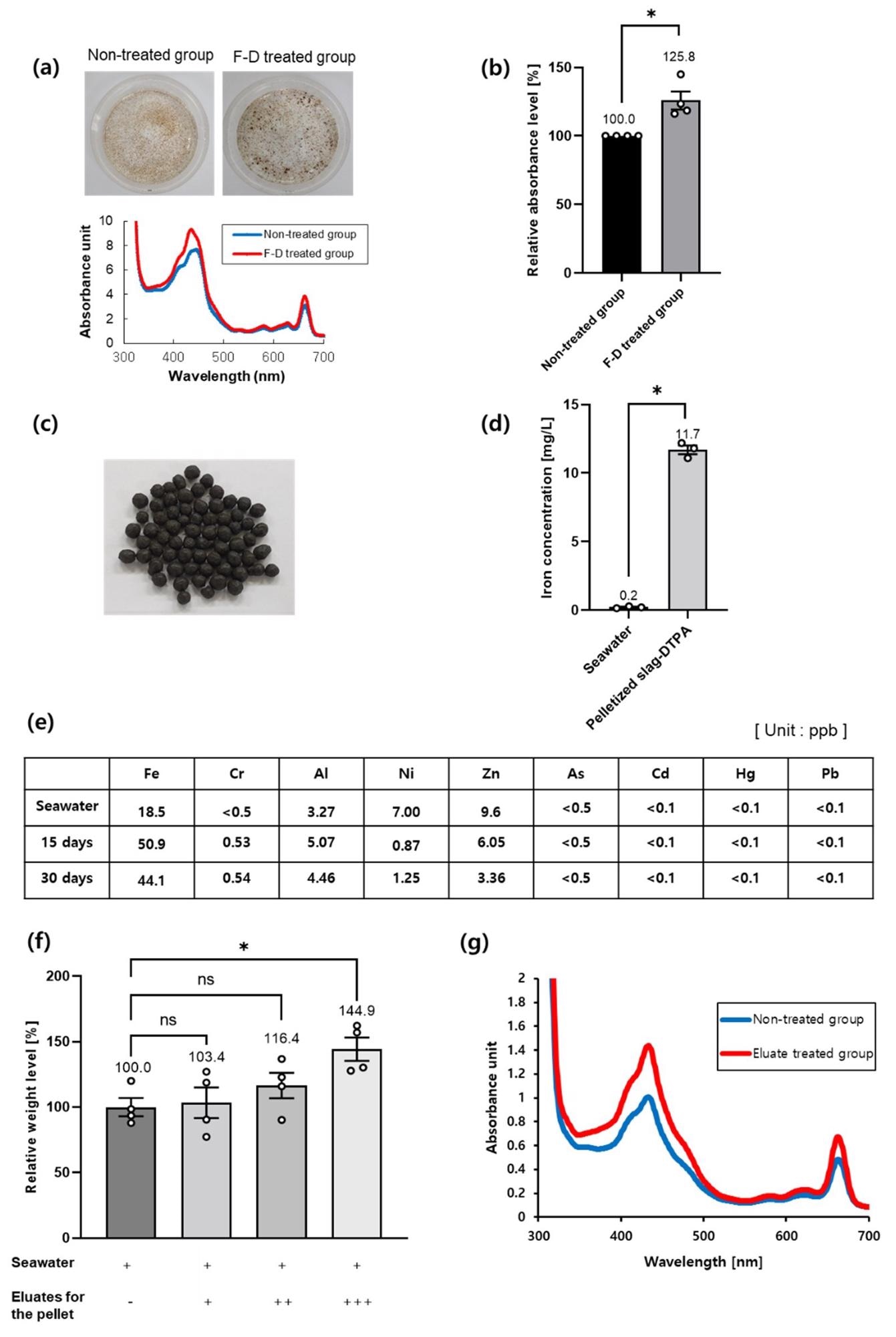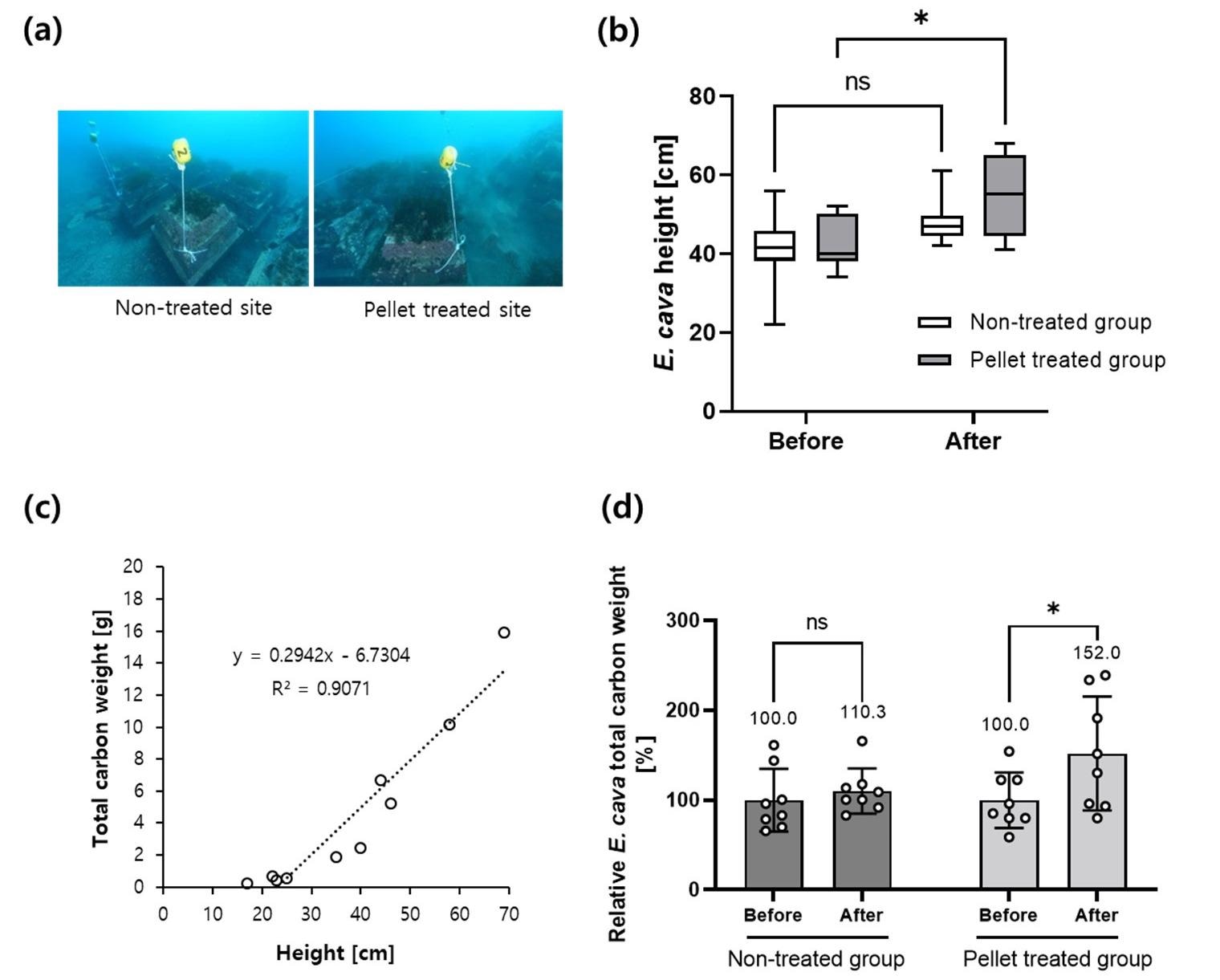In a new paper published in the journal Sustainability, scientists from the Research Institute of Industrial Science and Technology in Pohang, Korea, have investigated using dissolved iron from industrial processes to promote seaweed growth. The findings in the study have applications for the development of new blue carbon systems.

Study: Dissolved Iron from Steel Slag with Its Chelating Agent Promotes Seaweed Growth. Image Credit: Damsea/Shutterstock.com
Blue Carbon
Sequestering carbon is a key climate change mitigation strategy. Storing carbon in photosynthetic organisms is one of the most efficient ways to remove atmospheric carbon dioxide, and additionally, these organisms can be used to produce biomass for several value-added products.
Blue carbon is a term that refers to carbon that is sequestered in marine and coastal ecosystems. In addition to the vast amounts of carbon that can be removed from the atmosphere and stored in these systems, blue carbon storage has a range of other benefits. These include flood protection, improved water quality, and increased biodiversity. In the UK alone, marine ecosystems sequester and store around 2% of total carbon emissions.

Fe−DTPA elutes the soluble iron in the range of oceanic pH. (a) The composition for steel slag was analyzed through X−ray Fluorescence (XRF) (RIGAKU, Primus II), which showed that steel slag contains an iron complex. The total weight percent of the iron complex was about 35.7% of the total steel slag weight; (b) An iron elution test for slag, slag + EDTA, and slag + DTPA was performed. Iron concentrations were measured by using ICP−MS. The results show that only the Fe + DTPA mixture dramatically eluted a soluble iron. Seawater was used as a negative control. (ns, not significant, * p < 0.05; by ordinary one−way ANOVA followed by Dunnett’s multiple comparisons test; error bars indicate SEMs); (c) An assessment of the iron elution capacity for the combination of steel slag and DTPA was conducted. Seawater was used as a negative control group. Soluble iron concentrations were measured through ICP−MS. (DTPA) −: negative control, +: 1% of slag weight, ++: 10% of slag weight, +++: 100% of slag weight (ns, not significant, * p < 0.05; by ordinary one−way ANOVA followed by Dunnett’s multiple comparisons test; error bars indicate SEMs). Image Credit: Kwon, P.K et al., Sustainability
Seaweed and Seagrasses: Important Blue Carbon Sequestration Organisms
Seaweed and seagrasses are important blue carbon sequestration and storage organisms. Artificial reefs are used to promote seaweed growth and aid its role in marine forestation and carbon sequestration. However, in recent years marine deforestation has increased at a rapid pace in large coastal areas, and studies have reported an alarming rate of ocean deforestation over the past few decades due to human activity.
Along South Korea’s coastal area, which totals 40,868 ha, 18,759 ha has been affected by this critical issue. A range of factors has contributed to increasing marine deforestation, including rising sea temperatures, decreased salinity, and declining nutrients that affect seaweed growth.
The blades of seaweeds absorb the nutrients necessary for growth and development, using them for metabolism and photosynthesis. Iron is an important nutrient as it plays an essential role in chlorophyll production, which is crucial for photosynthesis in phototrophic organisms such as seaweed. However, where marine desertification occurs, there are low concentrations of dissolved iron. This affects the growth and development of several marine organisms.

Slag−DTPA promotes seaweed growth. (a) Gametophytes of S. japonica were cultured in the Provasoli−enriched seawater (PES) media. The contents of photosynthetic pigments were measured by using a spectrophotometer. The non−treated group and F−D (Fe−DTPA) treated group absorbance levels were shown and compared. PES media was used as a negative control; (b) The absorbance levels of the non−treated group and the F−D (Fe−DTPA) treated group were measured and compared. (n = 4, * p < 0.05; unpaired Student’s t test; error bars indicate SEMs); (c) A picture of pelletized steel slag and DTPA is shown above; (d) The measurement was conducted with an ICP−MS (n = 3, * p < 0.05; unpaired Student’s t test; error bars indicate SEMs); (e) Element analyses for any potential toxic effects were performed for 30 days. The slag−DTPA pellets were applied in seawater for 30 days. The seawater was fully exchanged daily considering the case of the East Sea. The measurement was conducted by using ICP−MS; (f) The sporophytes of S. japonica were cultured and weights measured. The pellet was eluted in seawater for 48 h. −: negative control, + (Pelletized slag−DTPA): 0.01% of seawater weight, ++: 0.1% of seawater weight, +++: 1% of seawater weight (n = 6, ns, not significant, * p < 0.05; by ordinary one−way ANOVA followed by Dunnett’s multiple comparisons test; error bars indicate SEMs); (g) The photosynthetic absorption spectrum of the pelletized slag−DTPA eluate treated group and the non-treated (seawater only) group are shown above. Image Credit: Kwon, P.K et al., Sustainability
Utilizing Industrial By-products to Increase Dissolved Iron Concentrations
Solving this issue is a key concern for scientists working in the field of blue carbon sequestration. Utilizing waste products that are high in iron provides a solution to this problem, providing increased nutrients and improving the circularity of industries such as iron and steelmaking.
Steel slag is one such waste product that has been the focus of research in recent years. This material has been employed in the construction of artificial reefs due to its stability against wave action and high specific gravity. The high content of dissolvable iron also provides plenty of nutrients for the growth and development of seaweed. However, there are some issues with its use, such as immediate oxidization in seawater due to its pH, causing the precipitation of insoluble colloidal hydroxides.
To address this challenge and prevent oxidation, studies have concentrated on using chelating agents such as EDTA and fulvic acid. A well-known chelating agent which has shown particular promise in research is PDTA. Studies in the field of agriculture have indicated that this chelating agent works better than EDTA in alkaline soils, and research has indicated that iron chelating abilities are strongly dependent on pH. However, there is little research on their effects on seawater.
The Study
The study has proposed an efficacious method for supplying soluble iron in seawater conditions for seaweed growth promotion. The growth-promoting material presented in the research also has the effect of enhancing levels of photosynthetic pigments in seaweed samples, significantly improving levels of blue carbon sequestration in seaweed.
Seawater is weakly alkaline, and based on the previous reports of the effectiveness of PDTA as an iron-chelating agent in alkaline soils, the authors chose this chelating agent in the study. Steel slag was chosen as the iron source due to the high presence of this essential nutrient for seaweed growth. When combined to form slag-PDTA, the elution of iron was enhanced.

Pelletized slag−DTPA promotes sea forest growth and enhances carbon sequestration. (a) Pictures of the pellet treated site and the non−treated site were presented. The pellets were applied on the artificial reefs where pictures were taken at a depth of 15 m; (b) Box and whisker plots are shown. The thallus heights of E. cava were measured in January 2021 and in June 2021. (n = 8; ns, not significant; * p < 0.05 by two−way ANOVA followed by Tukey’s multiple−comparison test). Whiskers indicated minimum and maximum values. The boxes showed the 25th, 50th (mean), and 75th percentiles of the distribution; (c) The relationship between the E. cava thallus height and total carbon weight is represented above. The thallus height of E. cava was directly measured in the lab and their total carbon analyses were analyzed. The linear regression equation was y = 0.2942x−6.7304, R2: 0.9071. The samples were obtained from Ulleung Island, South Korea (n = 11); (d) The carbon weight changes (%) of E. cava were estimated based on the linear equation (n = 8; ns, not significant; * p < 0.05 by two−way ANOVA followed by Tukey’s multiple−comparison test). Image Credit: Kwon, P.K et al., Sustainability
Seaweed growth was enhanced on artificial reefs by pelletizing the steel slag/PDTA mixture. The height and total carbon weight of E. cava were experimentally observed over the course of 5 months, displaying a meaningful increase in both. The authors observed a linear correlation between height and carbon weight, indicating that carbon sequestration was promoted by seaweed height.
Currently, blue carbon sequestration is limited to coastal ecosystems such as tidal marshes, with little consideration given to seaweed as a sequestration and biomass source. The novel method presented in the research demonstrates that it is possible to use these organisms for sequestering atmospheric carbon whilst preventing marine deforestation and limiting the effects of climate change on fragile marine ecosystems.
Further Reading
Kwon, P.K et al. (2022) Dissolved Iron from Steel Slag with Its Chelating Agent Promotes Seaweed Growth Sustainability 14(9) 5498 [online] mdpi.com. Available at: https://www.mdpi.com/2071-1050/14/9/5498
Disclaimer: The views expressed here are those of the author expressed in their private capacity and do not necessarily represent the views of AZoM.com Limited T/A AZoNetwork the owner and operator of this website. This disclaimer forms part of the Terms and conditions of use of this website.